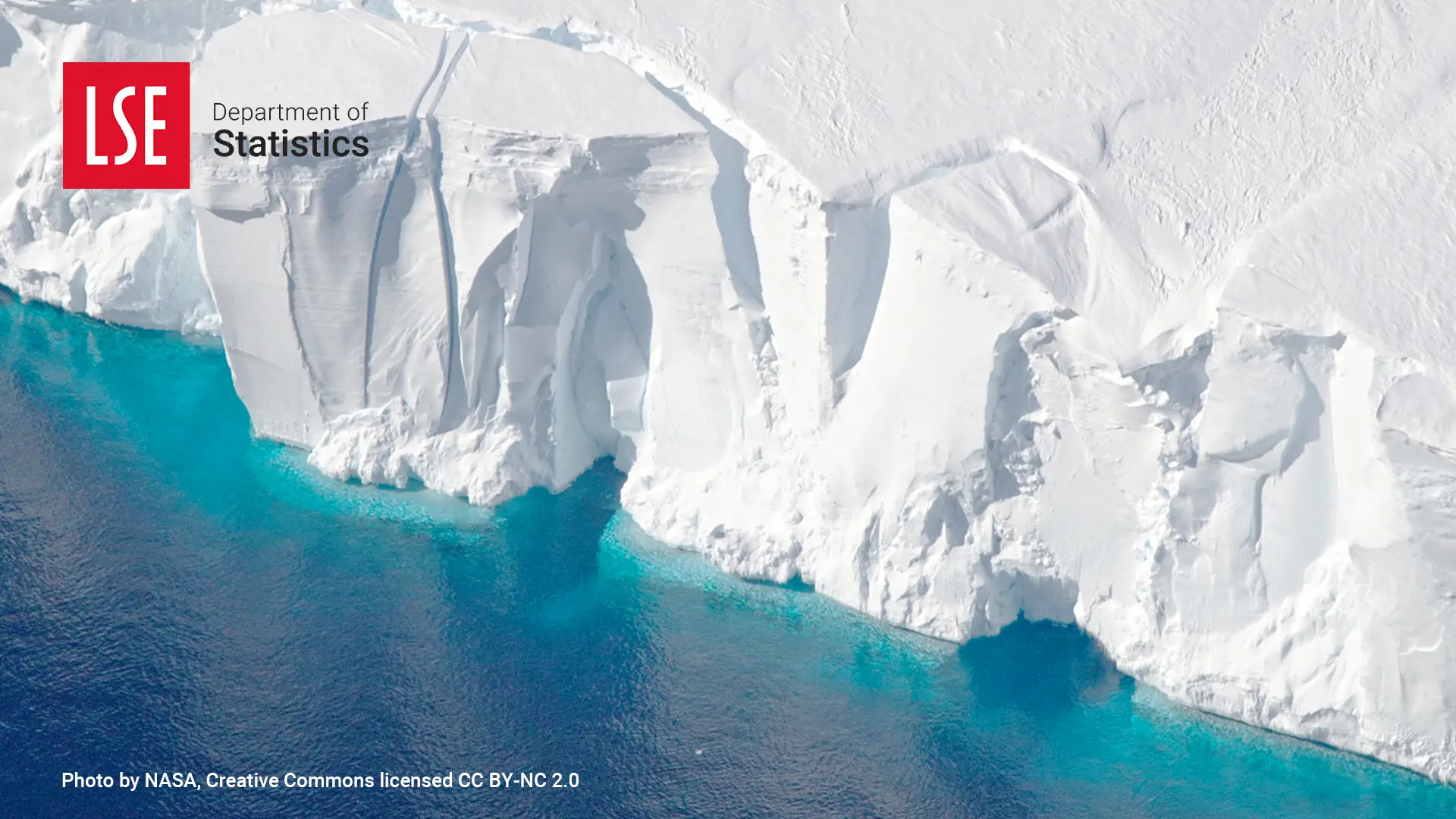Predicting Antarctic ice melt and its impact on rising global sea levels
Dr Ieva Kazlauskaite and Dr John Barlow introduce the upcoming 'IceDice' project, which aims to improve our ability to forecast the behaviour the West Antarctic Ice Sheet in the age of global warming.
As climate change and its impacts accelerate, the need for reliable, actionable forecasting becomes ever more urgent.
The future of our coastlines are inextricably bound up in the fate of the West Antarctic Ice Sheet (WAIS), a vast expanse of ice that, in places, is over 2000 metres deep. It collectively contains enough ice for its collapse to raise global mean sea-level by up to five metres.
However, despite its critical role in global sea level rise, the precise contribution of WAIS remains one of the most uncertain elements in climate forecasting. Needless to say, this uncertainty has profound implications, for climate science, global economics, infrastructure planning, and societal resilience.
Without adaptation, flood-related costs could soar to an estimated $1 trillion per year globally by the end of the century. However, modelling suggests that optimal strategies for coastal adaptation could reduce this figure to around $100 billion annually. Realising this potential $900 billion saving hinges on our ability to forecast sea level rise with accuracy over planning horizons that span decades.
Forecasts that fail to capture the full range of possible outcomes can lead to costly missteps. Overly pessimistic projections may prompt over-adaptation, diverting resources from other pressing needs and hindering economic growth. Conversely, overly optimistic forecasts risk under-adaptation, potentially resulting in catastrophic infrastructure loss and widespread societal harm. Reliable probabilistic forecasts are essential for stress-testing policy decisions, from energy strategy to coastal defence planning.
Current models struggle to provide this level of reliability. Many lack the realism needed to simulate key processes such as ice fracture and ice-ocean interactions. Moreover, the computational demands of running enough simulations to fully sample the probability space have proven prohibitive.

This is where the ‘IceDice’ project comes in. Funded by the Natural Environment Research Council (NERC), IceDice aims to transform our ability to stochastically model the behaviour of WAIS.
As part of this project, starting this Autumn and running through to 2028, the project team will seek to overcome some of the longstanding barriers in probabilistic ice-sheet modelling. IceDice brings together expertise in glaciology, climate modelling, machine learning, and statistical science.
The project will significantly enhance the realism of ice sheet models by integrating both ice fracture mechanics and ice-ocean interactions into a unified framework. These processes are critical to understanding how the ice sheet might respond to warming oceans and atmospheric changes, yet they are often treated in isolation due to modelling limitations.
To overcome the computational bottleneck, IceDice will leverage large-scale computing resources alongside cutting-edge techniques in machine learning and statistical emulation. This hybrid approach will allow the project team to efficiently calibrate model parameters and emulate complex simulations, dramatically increasing the number of scenarios that can be explored.
A key innovation will be our use of a sampling algorithm designed to converge on the probabilities most informative for decision-makers. Rather than simply generating a wide range of outcomes, this method focuses computational effort on the scenarios that matter most, particularly those involving extreme sea level rises that pose the greatest risk to coastal communities.
By improving the accuracy and reliability of sea level forecasts, IceDice is anticipated to offer a powerful tool for coastal planners and policymakers. It will reduce uncertainty, enable the evaluation of adaptation strategies under a range of plausible futures, and the selection of pathways that maximise economic savings and societal benefits. Ultimately, there is potential to better safeguard communities around the world from the devastating impacts of sea level rise.
The project’s emphasis on extreme risk assessment is particularly important. While average projections are useful, it is the tail-end risks, the low-probability, high-impact events, that often drive the most significant costs. IceDice’s probabilistic framework ensures these risks are not overlooked, providing a more robust basis for long-term planning.
Look out for updates from the British Antarctic Survey and the LSE Department of Statistics as the project progresses.
By Dr Ieva Kazlauskaite, Assistant Professor and Dr John Barlow, Engagement and Communications Lead
This blog is published as part of the LSE Department of Statistics' new blog 'The Measure of it'.